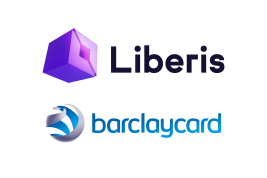In this blog, Tito Sarrionandia explains how Liberis leverages AI and deep data insights to transform financing for small businesses, surpassing traditional lending limitations.
The blog discusses how artificial intelligence is changing the embedded finance landscape by providing tailored experiences, streamlined customer experiences, test data for training models, and transparency.
Discover how sustainable lending empowers small businesses to thrive responsibly, funding eco-friendly projects that build trust with ethically minded customers.
This blog explores how traditional banks are revolutionising customer experience by collaborating with embedded finance platforms, which seamlessly integrate innovative financial services within non-financial companies' products or services, enhancing convenience, personalisation, accessibility, and security while streamlining financial transactions and improving financial education.
Discover how 4-click funding revolutionizes e-commerce platforms, empowering merchants with instant, personalized access to vital funds while ensuring convenience, transparency, and security.
Learn how Liberis scaled by decomposing monolithic data, adopting a Data Mesh, and aligning teams to accelerate product development and unlock data value.
Learn how future trends in Generative AI will transform workplace productivity and customer experience through hyper-personalisation, AI assistants, and more.
Learn how Liberis, Teya, and Google overcame challenges like employee resistance, data quality, and ethical concerns in implementing GenAI in business.
Learn how GenAI is revolutionising business operations and customer experiences with insights from industry leaders at Google, Liberis and Teya.

A monthly digest of industry news, articles, and updates
Embedded finance is a big change to the fintech world. It has completely changed the way we think about financial services. It’s so popular that you’ve probably used it before, even if you don’t know it.
Embedded finance is a new way to provide financial services. It uses technology to connect financial products, like payments, loans, and deposits, to non-financial platforms, like company websites and mobile apps. This makes it easier and cheaper for merchants and brands to offer financial services to their customers.
The rise of embedded finance has been made possible by three big changes in the business world:
These three forces are working together to create embedded finance services that can strengthen brand loyalty, increase customer retention, boost conversion rates, and generate repeat business. And the growth is amazing: the global embedded finance market is expected to grow from $264 billion in 2021 to $606 billion in 2025.
Another technological development that’s fuelling this unstoppable growth is artificial intelligence (AI).
The rise of AI has turbocharged the intersection of finance and technology. AI is constantly changing, which makes it possible to create embedded user experiences that are more and more intuitive, natural, and engaging. And the benefits are clear:
AI algorithms allow embedded finance platforms to personalise user experiences by analysing huge amounts of data in real time. This helps them to understand customer preferences, behaviours, and patterns, and to tailor financial services, such as loans, accordingly.
For example, AI-powered credit scoring models use machine learning to analyse non-traditional factors, such as reviews, to offer terms and conditions that are tailored to an applicant’s unique financial situation.
Embedded finance platforms can also use real-time data analysis to offer convenient experiences from start to finish. For example, embedded lending makes the loan application and assessment process easier and faster by delivering a frictionless four-click journey that unlocks funds quickly and cost-effectively once AI has expedited the merchant pre-approval process:
This convenience removes barriers to access to capital, such as old-fashioned lenders, and gives small and medium-sized businesses the point-of-need access to capital they need to manage their cash flow efficiently. Consumers can also access flexible payment structures that improve their online shopping experience.
By simulating user activity patterns and generating scenarios that mimic the characteristics of real-world situations, generative AI can be used to create synthetic test data for training models and evaluating systems. This diverse and representative dataset enables robust testing and development of embedded finance systems and informs decisions.
For example, generative AI is a powerful tool for creating synthetic data that mirrors fraudulent patterns. By training generative AI models on vast datasets containing known instances of fraud, it’s possible to generate data that simulates the characteristics and behaviours of fraudulent activities. This can be harnessed to create realistic scenarios for testing and fine-tuning embedded fraud detection capabilities.
As AI is used more and more in embedded finance, businesses want access to more real-time data to make better decisions. But how accurate is this data? Explainable AI (XAI) is helping to bridge the gap between AI models and user trust in their reliability. XAI is a set of processes and methods that makes AI more explainable, intuitive, and understandable to human users without sacrificing performance or prediction accuracy.
For example, non-financial businesses that offer lending as part of their customer experience are using XAI to make informed creditworthiness decisions directly within their core applications or products. Liberis offers a revenue-based lending model powered by an intelligent data engine that accurately predicts business transaction revenues and makes personalized and pre-approved offers instantly. 78% of businesses receive their funding in less than 48 hours.
AI can constantly learn and adjust, so embedded finance will keep evolving in terms of user experience, transparency, fraud prevention, and accessibility of financial services. The progress that AI has already made will continue to advance as AI learns from experience and applies what it learns.
Generative AI, the technology behind ChatGPT, is taking this to the next level. Generative AI goes beyond traditional AI, which is typically used to analyse data and make predictions, by creating new data. For example, generative AI can be used to create chatbots that can understand the context of a situation and respond accordingly to provide personalised financial advice and support. This is just one example of how AI is making embedded finance more seamless, tailored, and accessible.
At Liberis, we’re passionate about giving small and medium-sized businesses (SMBs) the financial tools they need to succeed. We’ve been doing this for over 17 years, and we have a ton of data to show for it. This data is incredibly valuable, and it’s something traditional lenders often overlook. It allows us to understand what makes businesses successful and to fund many more of them around the world.
Our new data platform is a game-changer. It lets us run experiments with this data quickly and easily – in just 48 hours in some cases!
Data is at the heart of everything we do at Liberis. Whether we’re assessing a merchant’s performance or evaluating the impact of a new feature, data guides our actions. This approach requires seamless collaboration across teams and choosing technologies that enable swift execution.
Our marketing team, for instance, wanted to tailor their strategies based on insights like past performance and industry strength. Using our data, they can now market more effectively to different merchants.
Using our extensive data from the Business Cash Advance (BCA) product, we estimate a merchant’s repayment rate based on factors like business size, monthly revenue, and industry.
The Performance vs Expectation (PvE) metric is one of our most critical metrics at the individual merchant level. If a merchant falls short of expectations, our operations agents step in to offer support and solutions to get them back on track.
This metric is also beneficial for partners. By aggregating this data, partners can see if their merchants are performing above, on track, or below expectations and how this changes over time. This insight helps partners understand the impact of attributes like seasonality and industry on their merchants.
An essential data point we collect is the Merchant Category Code (MCC) of our merchants. Stripe has a great guide about MCC codes and their importance to the finance industry. For Liberis, MCC codes provide targeted benefits to our partners and merchants.
The Revenue Performance vs. Peers metric is a composite metric that provides information on how a merchant’s revenue compares to others within their industry. This can help partners decide which businesses to target with their marketing efforts. For example, a partner might see that restaurants tend to perform well with Liberis products and choose to focus their marketing on that industry.
This metric measures a single merchant’s revenue growth by comparing the current month’s revenue to the previous month’s to see if revenue is increasing or decreasing.
Strong revenue growth is a great sign that our products are helping businesses succeed. We’re more likely to offer these businesses preferential renewal terms. We can also use this data to see if certain industries or regions are being affected by broader trends.
One great example of how our products help businesses is Steve, the owner of Two Magpies Bakeries. Since using Liberis’s BCA product in 2018, Steve has grown his business from one store to over 10 cafes and 3 production units! Read the full case study here.
From initial idea to execution, we made these metrics consumable via an API and within our internal tools within a few days of first discussing the feasibility. This approach is possible due to our choice of data platform technologies and our organisational structure.
We work cross-functionally, allowing one engineer and one analyst to produce new metrics for the rest of Liberis by directly collaborating with the teams who use this data. Our focus on modernising our data platform and this collaborative approach to data enables quick experimentation with new ways of defining metrics and serving data, providing value to the business swiftly.
This post is the first in a series about transforming our use of data and how we use a pragmatic data mesh approach at Liberis to provide invaluable data insights at scale with ease.
GenAI is revolutionising business operations, enhancing productivity, and improving customer experiences. The recent GenAI session provided a wealth of knowledge on these advancements. This blog explores the key insights shared by Deb Lee, AI/ML Customer Engineer at Google Cloud, and a panel discussion moderated by Rob Straathof, CEO of Liberis, featuring industry leaders Nima Montazeri, CPO at Liberis; Adrian Poole, Director of Digital Natives at Google Cloud; and Pranay Ahluwalia, CPO of Teya.
The journey of AI from simple chatbots to sophisticated systems has been transformative. Initially, there was much hype around chatbots, but now businesses have a more nuanced understanding of AI’s capabilities. They are focusing on integrating AI with platforms, APIs, and managed services to enhance functionality. Real-world examples include leveraging AI for comprehensive content generation, predictive analytics, and improving customer interactions.
AI models are instrumental in optimising content and creativity. By analysing historical ad campaigns, AI can extract key features that drive performance and use predictive algorithms to forecast creative/copy success. This approach significantly reduces time and cost compared to traditional methods. Advanced AI, such as Gemini, can analyse multiple data types (video, audio, text, PDF) simultaneously, providing comprehensive data insights and streamlining operations.
Businesses are prioritising AI applications that directly impact business growth and profitability. Identifying core use cases and focusing on ROI is crucial for effective AI implementation. Internally, AI is being used for tasks like HR help desk support and RFP automation, reducing manual workload and improving efficiency.
Ensuring responsible AI use is critical, especially in customer-facing applications where errors can have significant repercussions. Implementing digital watermarks and indemnification protections for generated content addresses copyright concerns. Preventing AI hallucinations is essential, particularly in sensitive areas like customer support, to avoid misinformation and errors.
Companies are encouraged to prototype and experiment with AI use cases, leading to innovative solutions. A flexible approach to AI development allows for quick iteration and scaling of successful prototypes. A strong data foundation is essential for successful AI implementation, enabling seamless integration and leveraging of AI technologies.
Transforming Customer Experiences with AI-driven Self-Service: AI-driven digital self-service and onboarding are transforming customer experiences. By implementing AI chatbots, businesses can offer digital onboarding and self-service options, reducing direct customer contact and allowing human agents to handle more complex issues.
Boosting Agent Efficiency with AI-powered Support Tools: AI also supports customer service agents by providing instant access to information, reducing response times, and enhancing service accuracy. Tools like Google Workspace utilise AI to summarise email threads and synthesise data from various sources, significantly boosting productivity. AI-powered translation and dubbing in video conferencing tools enable seamless communication across different languages, enhancing collaboration in global organisations.
Leveraging AI for Fraud Detection and Enhanced Security: AI is being deployed for fraud detection, crucial for payment companies, and shows promise in enhancing security. AI analysis of customer calls provides insights into customer satisfaction, helping refine customer service processes.
Addressing Employee Concerns about AI: Employee resistance and fear of replacement are significant challenges in AI implementation. Organisations should address this by clearly communicating that AI is intended to assist, not replace, employees. Training programs can be implemented to upskill employees, making them more comfortable with AI tools.
Ensuring Data Accuracy and Mitigating Hallucination: Accuracy and hallucination issues should be combated with strict controls and verification processes to monitor AI outputs and prevent errors. Robust data governance frameworks ensure data privacy and security, maintaining trust and compliance.
Integrating AI with Legacy Systems Seamlessly: Integrating AI solutions with legacy systems can be complex. Companies should adopt a phased approach to AI integration, using middleware solutions to bridge gaps between new AI tools and existing systems.
Maintaining Ethical Standards in AI Implementation: Maintaining ethical standards is essential, particularly in sensitive areas like financial services. Ethical guidelines and oversight committees should be established to ensure fair usage and avoid unintended consequences.
Hyper-Personalised Customer Experiences with AI: AI will enable hyper-personalised customer experiences by analysing individual preferences and behaviours. Businesses can offer tailored recommendations and services, enhancing customer satisfaction and loyalty.
Intelligent AI Assistants for Employee Empowerment: Advanced AI assistants will support employees in decision-making, task management, and creative processes, significantly reducing workload and improving output quality. Take a look at the video below to see how Google is doing this through project Astra.
Breaking Silos: Data Integration for Better Decisions: Enhanced data integration across organisational silos will lead to better decision-making and more coordinated business strategies.
Democratising AI Development with Low-code/No-code Platforms: The rise of low-code and no-code platforms will empower non-technical employees to develop and deploy AI solutions, accelerating digital transformation and fostering innovation.
AI for Enhanced Security and Fraud Prevention: AI advancements in security and fraud prevention will enhance protection for businesses and customers.
AI in Creative Fields: Fueling Innovation: AI’s role in creative and strategic areas, such as marketing and product development, will free up human creativity for higher-level strategic thinking and innovation.
The Future of GenAI Agents: The future of GenAI promises advanced AI agents capable of complex, multi-step processes and interacting with various systems based on user authentication and permissions.
Multimodal AI Applications: The Next Frontier: Emerging technologies, such as real-time, multimodal AI applications, will provide new tools for businesses to maintain a competitive edge.
GenAI for Extended Video Content Creation: AI models capable of generating extended video content will open new possibilities for marketing and customer engagement.
GenAI is poised to transform the business landscape, offering unprecedented advancements in productivity and customer experience. By understanding and addressing the challenges of AI implementation and staying ahead of emerging trends, organisations can fully harness the potential of AI to drive growth and success. The future of genAI promises a new era of innovation, efficiency, and customer satisfaction, making it an essential tool for businesses looking to thrive in the digital age.
As Deb Lee mentioned, check out the blog on the 101 real-world GenAI use cases from the world’s leading organisations for more insights.
From facial recognition and digital voice assistants to social media algorithms and chatbots, artificial intelligence (AI) is embedded in our daily lives. This ability to intersect with and enhance everyday tasks has accelerated its adoption: 35% of companies are using AI in their business, with a further 42% exploring its use – and the financial services sector is leading the charge.
Nowhere is this more evident than in a disruptive sphere of this traditionally clunky sector: embedded finance. This insertion of financial services into nonfinancial platforms, to streamline processes and enhance user experiences, is being elevated by AI throughout every stage of the process – with compelling benefits.
By wedding embedded finance with AI, brands can give their customers exactly what they want: interactions with loans, accounts, and payments that mirror the highly personal and frictionless experiences they enjoy elsewhere online.
To achieve this, AI replaces narrow data sources based on demographics and age with real-time analysis of vast datasets – such as browser history, social interactions, and past purchases – empowering brands to recommend targeted products and services based on customers browsing and buying preferences.
This insight allows them to anticipate their expectations and offer them what they want at the right time as part of an integrated, personalised omnichannel experience – enhancing customer engagement, satisfaction, and loyalty.
The cost-saving potential of integrating AI-powered solutions into embedded finance is multifaceted:
The core aim of embedding financial services directly into non-financial platforms is to make transactions seamless by circumventing fragmented processes that rely on third parties. This innate ability to improve operational efficiency from the moment a customer engages with a brand through to the end of their journey is supercharged by AI.
This transformative technology leverages vast historical and behavioural datasets in real-time to streamline workflows, identify inefficiencies, automate processes, better understand customers, and accelerate and improve decision-making – liberating businesses from siloed data, manual processes, and short-sighted choices.
For example, AI can be used to automatically horizon scan the regulatory landscape for new rules and regulations, or amendments to existing ones. Having replaced potentially harmful manual processes that are prone to human error with automation, it notifies stakeholders and produces performance data that enables preventive action if workflows become, or are at risk of becoming, non-compliant.
Embedded finance, augmented by AI, creates a symbiotic relationship between the innovative platforms that power it and the brands that embrace it, who benefit from a competitive advantage by adding extra layers to their offering – such as personalisation, enhanced credit decisioning, improved security, and robust regulatory compliance.
Take embedded lending, for example. Credit decisioning is a fulcrum of this subset of embedded finance. AI vastly improves credit-approval times and percentages by providing forward-looking insights into an applicant’s suitability to repay a debt obligation in the future and presenting its findings in real-time, rather than depending on historic credit reports.
This comprehensive and expedited approach allows nonfinancial businesses that embed lending into their customer journey to make informed decisions that break down barriers to financial inclusion. For SMEs, this AI-driven decisioning unlocks access to time-critical funds that can mean the difference between survival and ceasing to exist – and can’t be obtained as seamlessly elsewhere.
For example, Liberis offers a revenue-based lending model driven by an intelligent data engine that automatically forecasts business transaction revenues and makes a personalised and preapproved offer instantaneously – with 70% of businesses receiving their funding in less than 48 hours.
These multifaceted advantages of integrating AI into embedded financial services combine to drive increased revenue growth – from personalisation that stimulates repeat business and cross-selling opportunities to accurate credit decisioning that increases the spending power of customers.
Amid the accelerated evolution of this transformative space, it’s estimated that embedded financial services will produce $384.8 billion in revenue by 2029 – almost a 17x increase over the $22.5 billion in revenue generated in 2020. Fuelling this exponential growth is AI and the compelling advantages of its intersection with this new distributed approach to providing financial services.
Embrace the transformative capabilities of embedded finance and AI to enhance customer experiences, reduce costs, boost operational efficiency, and drive market competitiveness.
We’re here to help you navigate the complexities of embedded finance and leverage AI to revolutionise your financial services strategy.
Fill out the form below to discuss our partnership model.




















We received your details, our teams will be in touch soon.

We received your details, our teams will be in touch soon.




